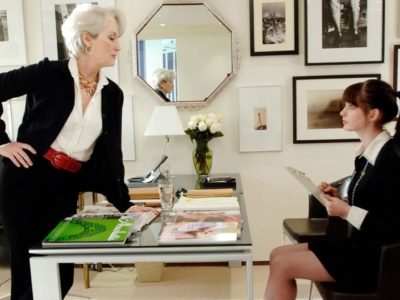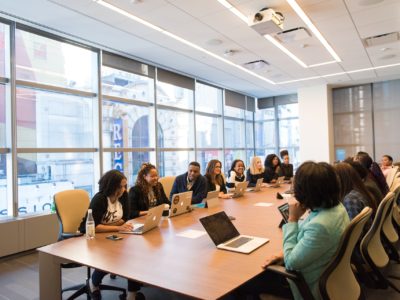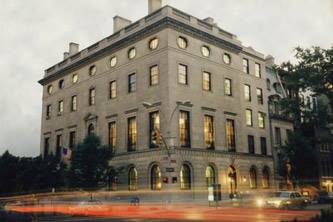As a college freshman, you might think you have a lot of time before you need to think “professional.” At least, that’s what I thought. However, after being at Penn State for less than a month, I realized I was wrong. The search for an internship, and eventually a job, begins the moment you step on campus. I receive countless emails every day offering different job opportunities. It’s exciting, but also overwhelming. I even needed a “business professional” outfit to wear to a networking event in September. I was there for the free food, not the job offers, but I left with a lot more knowledge about the communications field.
One of my favorite classes in the College of Communications this semester is all about how to “build your brand.” It is truly unlike any class I have ever taken before. We focused on making resumes, learning about our image and reputation and creating a “brand” for ourselves.
Your brand is a mix between your image and reputation. We learned that your image is how you want others to see you. You create your personal brand based on how you present yourself to others, whether through social media or in person. Your reputation, on the other hand, is how other people perceive you. This may or may not match up with the image you are trying to maintain. The professor explained that a perfect way to align your image and reputation, and create your distinct brand, is through LinkedIn.
One of our homework assignments, in fact, involved making a LinkedIn account. At first, I felt like I didn’t need one yet. What job recruiter would be looking for a freshman who has more experience as a babysitter than a business woman? But after going through the process of creating my profile I have learned how essential it is – and not a bit too early.
Many upperclassmen and PSU alumni spoke to my class. Each of them emphasized the importance of making the most out of your four years. While it’s incredibly important to join clubs and gain practical experience, it’s just as important to showcase this on your LinkedIn account.
Sometimes the most intimidating part about making a LinkedIn is setting it up in the first place. Creating a LinkedIn for yourself is like setting up a new social media account. You need to create a profile picture, add a summary and connect with others. I found it very helpful to follow online tutorials, like the one I found on Lynda.com.
One of my favorite aspects about LinkedIn is that it really allows you to showcase yourself. As in, you can create your LinkedIn to reflect the image you want to portray to future employers. Don’t be shy. Let people know you produced a film or wrote an article that got published (like I did with this article in College Magazine!). Include the links to these projects, so people can actually see your work.
Another assignment I had to complete involved searching on LinkedIn for potential people to connect with who had careers I was interested in. One great feature of the website is that you can search a company that you are interested in, and LinkedIn will allow you to see the people employed there who also attended your college. Networking is key, and LinkedIn allows you to connect with interesting, successful people from around the world.
Although I do not consider myself a LinkedIn expert (like, not at all), I have learned how to create a sufficient profile through online tutorials and in class. The first step is to pick a professional photo. Ideally, this would be a headshot. But you can even take it yourself. Try to make it a high-quality picture of yourself (this means no party pictures) because your photo is the first thing someone viewing your profile will see.
Next, include a short but thorough summary. This is the part that took me the longest to do. It helped to look up other upperclassmen from Penn State to see how they wrote their summary statement. This is your chance to explain who you are, what you’re proud of and what you hope to achieve in the future. In class, we even created a mission statement. It’s a sentence or two about what you want to do, why you want to do it and what results you want to achieve. This is a great way for an employer to know a lot about you within only a few seconds. I personally love Oprah’s mission statement, which is “To be a teacher. And to be known for inspiring my students to be more than they thought they could be.”
Along with creating a summary, include your work experience, club activities and education, even from your high school days. It all counts at this point in our lives. Another advantage to LinkedIn over a paper resume is that you can include your skills, such as the ability to use Microsoft Word or Adobe Premiere Pro. Other people can endorse you for these skills. It all helps set yourself apart from your peers.
More than 9 in 10 jobs now recruit new employees through LinkedIn. Many guest speakers from my class said they got most of their jobs not from applying, but from knowing someone. With LinkedIn, a simple “click to connect” can lead to an opportunity of a lifetime. The person has to accept your request, but there is no harm in trying.
Our teacher has encouraged us to stay active on LinkedIn, not just by networking and updating our profile, but also by posting content. Not selfies and funny memes, but professional posts that may be valuable for a future employer to see. For example, I might share news about the field trip I’m taking in December to visit magazine publishers in New York City. Every post should help shape your brand.
I’m not saying you need to have your career goals figured out right away. However, it’s never too early to start paving the way with a LinkedIn account. You never know where that one connection may lead you.



















